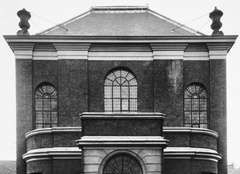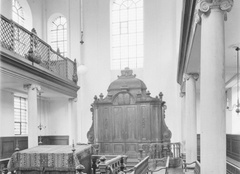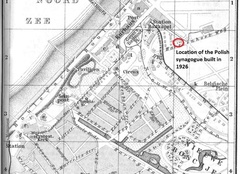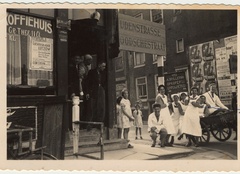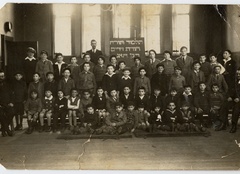Gravenhage
Also called Den Haag (English: The Hague)
The first Jews immigrated to The Hague in the early 1600s, often coming from wealthy and influential Jewish Portuguese families. In 1707 the Portuguese-Jewish community consecrated its first synagogue, followed by a second in 1726. Beginning in the mid-1600s these Portuguese Jews were joined by Ashkenazi, or central European Jews, fleeing pogroms in the eastern Europe. These new arrivals formed their own independent community, and the first Ashkenazi synagogue opened in 1723.
By the mid-1700s The Hague had become a center of Jewish culture. The city housed a Hebrew-language printing press and a Jewish school. Jews received equal rights with the Emancipation Decree of 1796, but still faced discrimination. In 1798 the Dutch government opened the first public school for Jewish children. However, many parents preferred to hire private tutors to educate their children at home, where they were usually taught in Yiddish, the language of Jews from eastern Europe.
The Jewish population of The Hague continued to grow throughout the 1800s, from about 1,850 at the beginning of the century to more than 6,000 by 1901 (about 30 percent of the total population). A number of new synagogues opened to serve the growing Jewish community and organizations such as the Council for Aid to the Poor cared for members in need. The late 1800s and early 1900s saw the growth of the Zionist movement that advocated for the creation of a national Jewish state.
From 1900 until the beginning of World War II, the Jewish population of The Hague more than tripled reaching approximately 17,500 by 1940. The character of the Jewish community began to change as Reform Judaism gained popularity and more Jews began to assimilate into Dutch culture—often bringing them into opposition with the more traditional Orthodox community. Survivor Margo Rappaport remembered that her parents “observed in the Orthodox way,” but spoke Dutch at home “with a few Dutch-Yiddish words thrown in for good measure.”
During this time the community also welcomed a new wave of Jewish immigrants from Poland. Many of these new arrivals—including the parents of Survivor Abraham (Abbie) Lipschutz—settled in the seaside neighborhood of Scheveningen. In 1926 the Polish-Jewish community opened its own synagogue. Lipschutz recalled, “There was a cultural struggle by the parents and the grandparents to keep the children in line according to old Eastern European structures.”
Scheveningen resident Martha Ekelmans remembered a popular Jewish bakery where “a lot of people went on Sunday morning to buy some fresh bagels.” However, not all neighbors were as friendly to Jews. Lipschutz remembered that in his high school “we were fiercely persecuted” by Nazi classmates “who used to beat us up and taunt us all the time.”
Despite growing antisemitism, many families felt secure, even after World War II began in September 1939. In fact, many German Jews fled to Holland for safety after Hitler came to power in Germany in 1933. Survivor Chaja Verveer described how she could trace her family’s lineage to the 1800s, saying, “Most of the family has lived for generations in … the Hague.” Rappaport added, “The Dutch never thought they [German forces] would enter Holland.”
After the German invasion of the Netherlands in May 1940, all Jews were required to register themselves and their property, and were banned from practicing their professions. From August 1942 through September 1943 about 15,000 Jews were deported to concentration camps. Only about 2,000 survived the war. Of the seven large synagogues in The Hague, only the Portuguese synagogue built in 1726 remained undamaged.
Gravenhage: Photographs & Artifacts
-
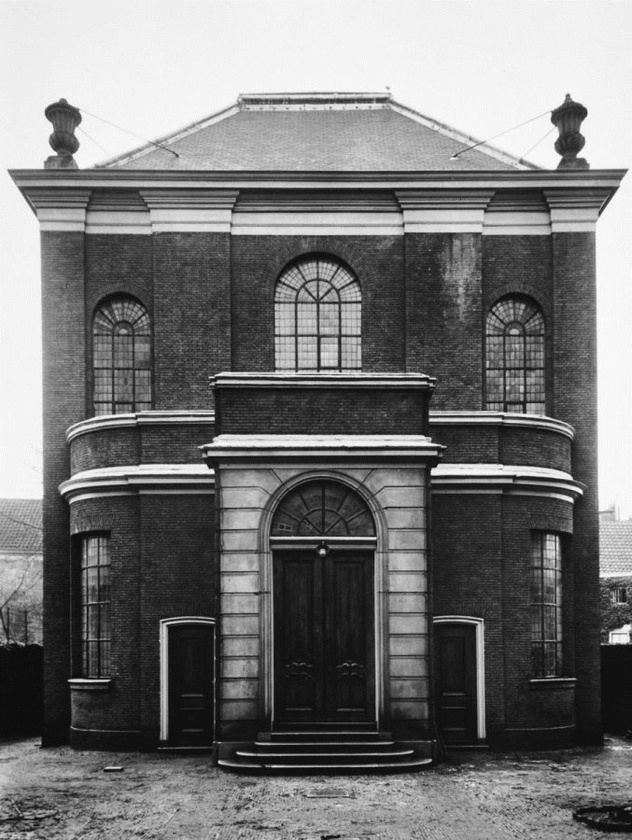 The entrance to the Portuguese synagogue completed in 1726. The 200-year-old building was destroyed in the Holocaust. © Rijksdienst voor het Cultureel Erfgoed / Wikimedia Commons / CC-BY-SA-3.0-NL
The entrance to the Portuguese synagogue completed in 1726. The 200-year-old building was destroyed in the Holocaust. © Rijksdienst voor het Cultureel Erfgoed / Wikimedia Commons / CC-BY-SA-3.0-NL -
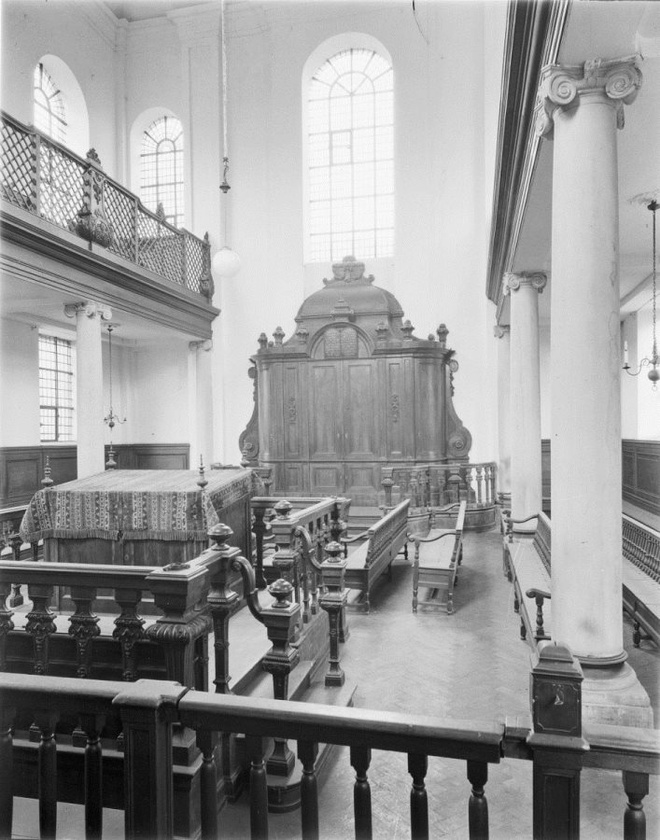 This interior view of the 1726 Portuguese synagogue shows the Torah ark where sacred scrolls were kept. © Rijksdienst voor het Cultureel Erfgoed / Wikimedia Commons / CC-BY-SA-3.0-NL
This interior view of the 1726 Portuguese synagogue shows the Torah ark where sacred scrolls were kept. © Rijksdienst voor het Cultureel Erfgoed / Wikimedia Commons / CC-BY-SA-3.0-NL -
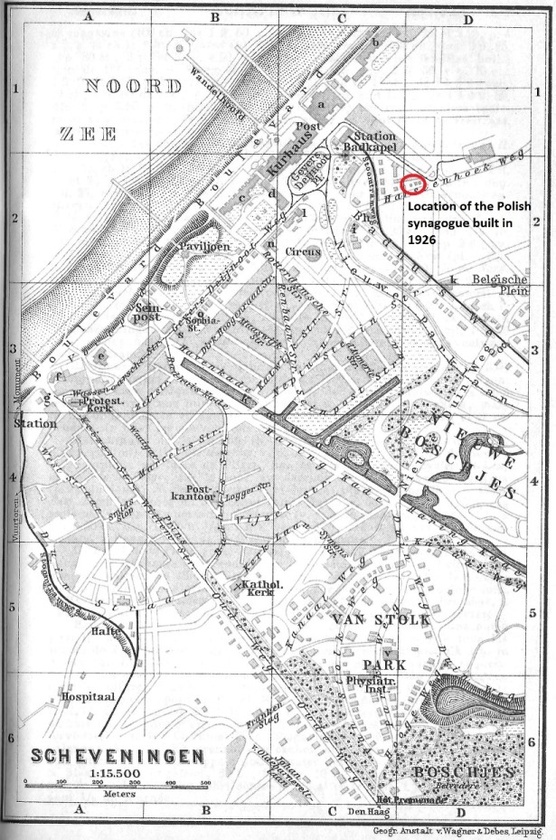 A map of Scheveningen in 1905. The red circle shows where the Polish synagogue was built in 1926. Anstalt von Wagner & Debes, Leipzig / Wikimedia Commons / Public Domain
A map of Scheveningen in 1905. The red circle shows where the Polish synagogue was built in 1926. Anstalt von Wagner & Debes, Leipzig / Wikimedia Commons / Public Domain -
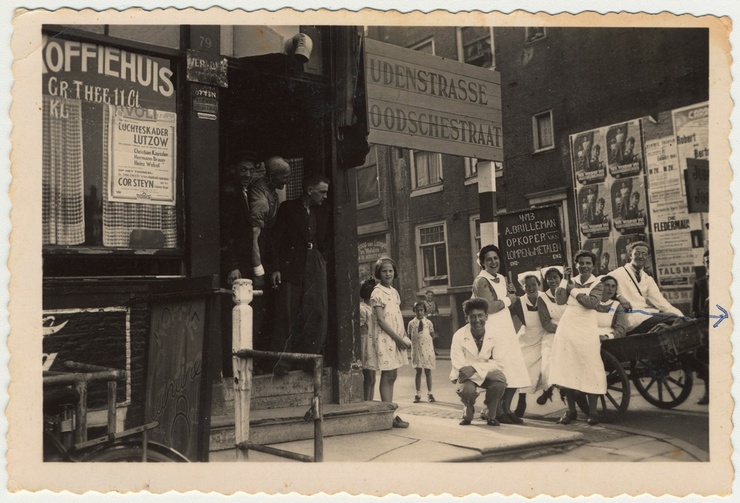 Jewish nurses and nursing students gather around a cart outside a coffee house on Judenstrasse, ca. 1940-1942. Credit: United States Holocaust Memorial Museum, courtesy of Clara Renee Keren Vromen
Jewish nurses and nursing students gather around a cart outside a coffee house on Judenstrasse, ca. 1940-1942. Credit: United States Holocaust Memorial Museum, courtesy of Clara Renee Keren Vromen -
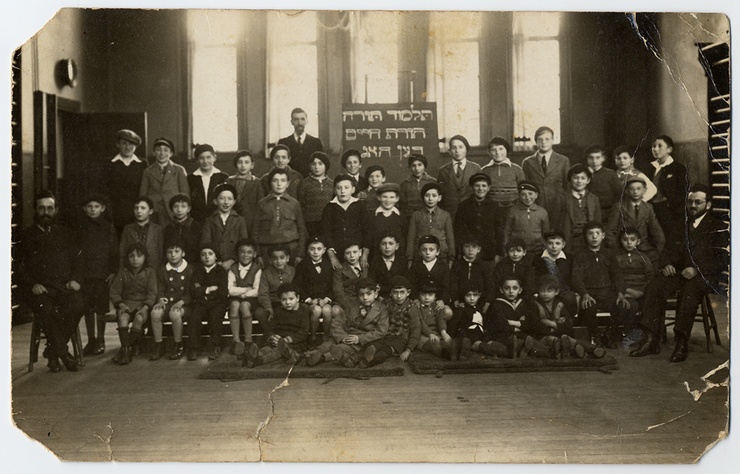 Group portrait of students and teachers of the Talmud Torah (religious elementary school) of The Hague, before May 1940. Credit: United States Holocaust Memorial Museum, courtesy of Zehava Gealel
Group portrait of students and teachers of the Talmud Torah (religious elementary school) of The Hague, before May 1940. Credit: United States Holocaust Memorial Museum, courtesy of Zehava Gealel
Destroyed Communities Memorial Slope
Gravenhage: Survivors
I grew up in this large family that always came together for the Sabbath meal.
In Holland, we felt so secure. The only thing we organized at that time were money-raising affairs to help those poor refugees. The Dutch never though they [the Nazis] would enter Holland.
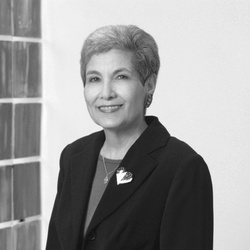
In the fairy tales everybody gets together and we live happily ever after and everybody loves each other and it’s the closest of families and the warmest of relationships. Unfortunately, in reality you have to consider that everybody was traumatized. When we came together we all needed attention, every single one of us . . . and there was only that much attention that can go around.
